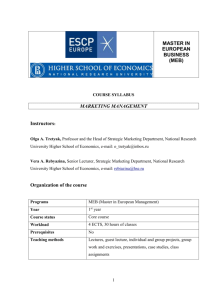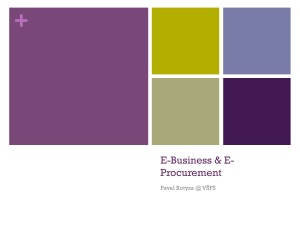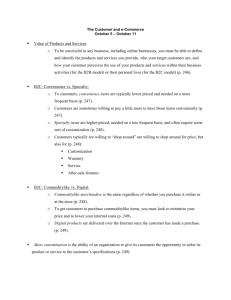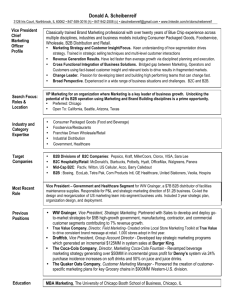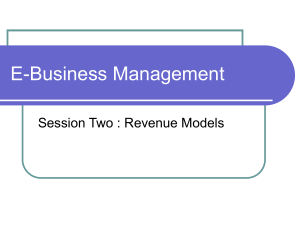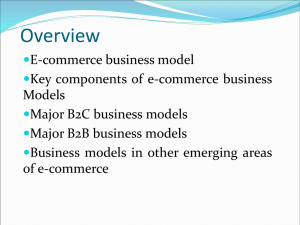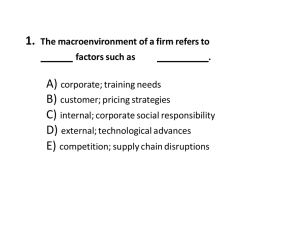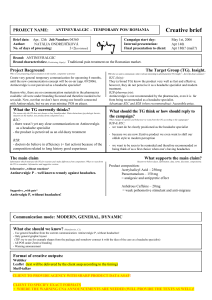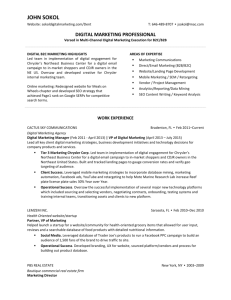B2B E- COMMERCE
advertisement
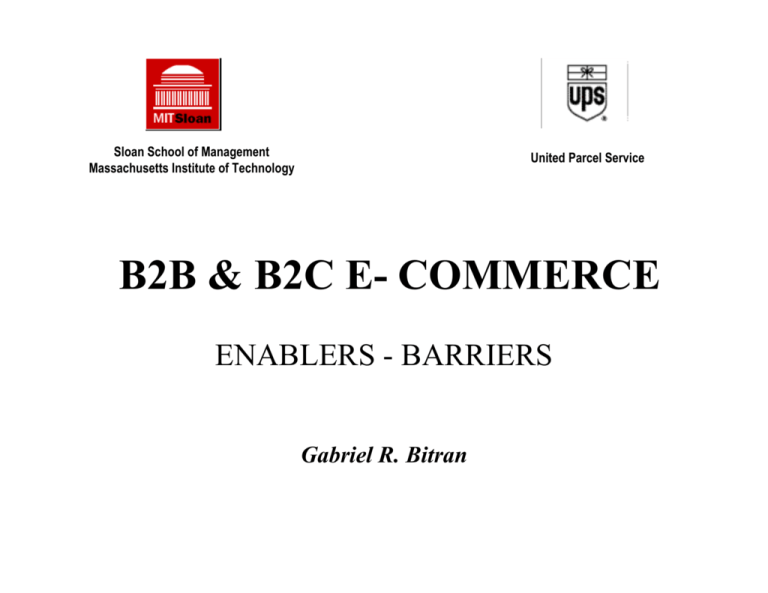
Sloan School of Management Massachusetts Institute of Technology United Parcel Service B2B & B2C E- COMMERCE ENABLERS - BARRIERS Gabriel R. Bitran Objectives • Gain an understanding of the dynamics of channel shift from traditional business to ecommerce. • Identify and prioritize the potential list of enablers and barriers to the channel shift. Transformation How has the Internet affected business? Traditional Economy Pre-Internet Era Supply Chain Product-driven Networked Economy Supply-Push Internet Era Brick-and-Mortar Demand Chain Slow to change Customer-driven Demand-Pull E-commerce Flexibility/Modularity Key Influences What factors have influenced the transformation? Supply Chain PUSH • Organization & Human Factors •Marketplace •Technology Demand Chain PULL •Finance •Legal Issues Shifting Channels How do these key factors affect the logistics and transportation industry? Business Company B2B Consumer B2C Organization & Human Factors Marketplace S? R E L B Technology ENA Finance Legal Issues S? R E I R BA R Enablers or Barriers Enablers and barriers • are dynamic in nature • change overtime • offer different opportunities and threats • have different impacts on different companies Enablers and barriers are interchangeable. Under one set of conditions, enablers can transform into barriers, and barriers can transform into enablers. Enablers Barriers B2B – Organization & Human Factors • Firm characteristics • Corporate culture • Management readiness • Skills availability • Knowledge Transfer B2B - Marketplace • Competition & new ecosystems Opportunities • Globalization • Customized service as business differentiator • Inter-enterprises & partnerships • Intermediary role in collaborative network B2B - Technology Technological infrastructure Opportunities • Legacy systems – digitization? • IT services • Convergence – infrastructure & network • Integration –intra and inter-enterprise • Network--access, availability, bandwith, mobility. • Alliances with IT outsourcing companies B2B - Finance • Risk assessment • Investment size • Past business models • Scalibility Opportunities • Consulting • Financing • Alliances with financial and consulting firms B2B - Legal Issues • Privacy • Security • Regulations—National International B2C – Human Factors • Attitude towards technology • Peers’ behavior • Demographics (income, ethnic group, age, gender) • Motivation to use technology • Consumer psychology • Return policies • Payment methods • Sensory Deprivation Issues • Loyalty programs B2C – Marketplace • Brand recognition and reputation • Pricing models • Timing • Multiple-channel integration • Customer service B2C – Technology • Network--access, availability, bandwidth, mobility • Online retailing environment • Interface • Website design Profesional design Personalization available Good navigational properties Minimal or no registration process Easy to use Fast loading Smart agent Real-time help B2C – Finance • Investment size • Cost of access • Payment methods • Financing B2C - Legal Issues •Privacy •Security •Regulations—National International Conclusions From Value Chain to Value Network at the Front-end (customization) Value in Common Infrastructure in Modularity in Orchestration Enablers and barriers are the driving force in the value chain transformation. They can transform the value chain into a value network that is integrated, optimized and customized. Conclusions (cont.) Business Model: Distributive Network • As value network emerges, outsourcing becomes the norm. strategic logistics • The complex structure of alliances and partnerships in a very competitive environment should be managed carefully. • In the networked economy, the value is in the network. To capture the most value, logistics and transportation companies will need to become the conductor of the value orchestration.


